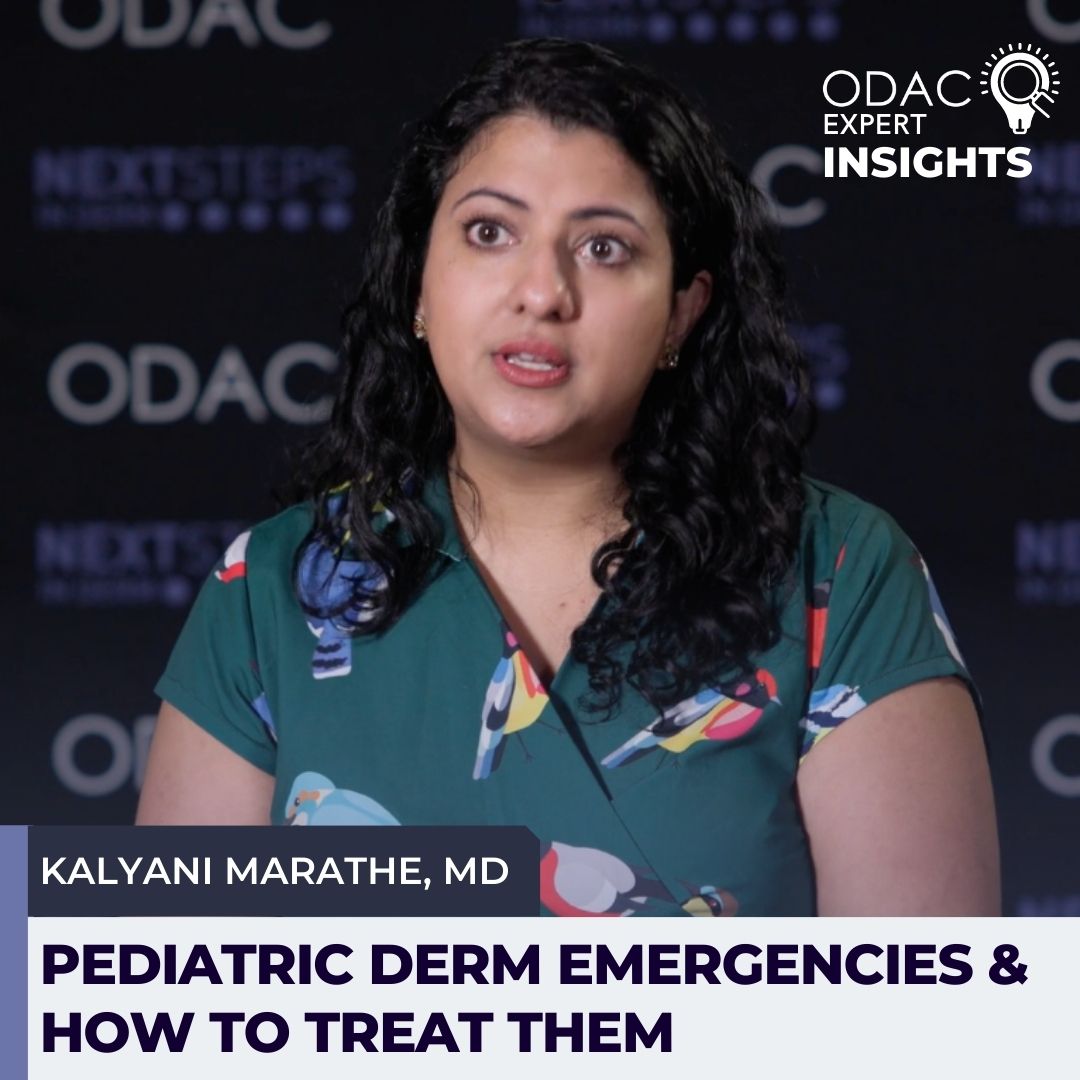Next Steps in Derm, in partnership with ODAC Dermatology, Aesthetic & Surgical Conference, interviewed Dr. Kalyani Marathe, director of the dermatology division at Cincinnati Children’s Hospital. Dr. Marathe shares serious pediatric skin issues including infections, drug reactions and congenital conditions. Watch and learn how to recognize and treat these serious issues, and how to know when it’s time to admit patients to the hospital. Find out what labs you need to run if you suspect DRESS syndrome, and why it’s important to involve ophthalmology if you suspect Stevens-Johnson Syndrome/toxic epidermal necrolysis. Plus learn about conditions that may present at birth, including epidermolysis bullosa and extramedullary hematopoiesis (blueberry muffin baby).
Further Reading
If you want to read more about pediatric derm emergencies, check out the following articles published in the Journal of Drugs in Dermatology:
Resident Rounds Part II: A Review of Neonatal and Infantile Rashes
ABSTRACT
Patients under two years old comprise a small fraction of the population of patients seen in general dermatology clinics. Newborns and infants have immature skin barriers and immune systems, and as a result may be afflicted with different cutaneous diseases than adults. Additionally, common conditions may present differently in this population and may not be as easily recognized. This may make evaluation and diagnosis challenging for dermatologists. We provide a comprehensive review of rashes seen in neonatal and infantile patients to aid with proper diagnosis and treatment of this population. This review may also serve as a useful reference for board preparation.
Treatment of Impetigo in the Pediatric Population: Consensus and Future Directions
ABSTRACT
Background: Impetigo is a common contagious superficial bacterial skin infection. Treatment of localized lesions can be achieved through topical antibiotics. Oral antibiotics are reserved for extensive disease. Increasing antimicrobial resistance to existing therapies have raised concerns. Antimicrobial stewardship, achieved through the responsible use of antibiotics, is an important measure to reduce bacterial resistance. This review highlights treatment options for impetigo and shares consensus statements to help guide the management of impetigo in the pediatric population.
Objective: An expert panel of dermatologists and pediatricians convened in February 2019 to establish evidence-based consensus on the management of impetigo in the pediatric patient population.
Methods: The consensus was created in accordance with the Appraisal of Guidelines, Research and Evaluation (AGREE) II instrument. Prior to the consensus meeting, a systematic literature review was conducted, with the selected literature deemed clinically relevant to the consensus statements. Statements were further refined and assessed systematically following established standards. The consensus process consisted of a modified Delphi approach. The consensus was established through a minimal 75% “agree” rate.
Results: Thirteen consensus statements were developed addressing clinical challenges, existing treatment options and their limitations, and new therapeutic alternatives.
Conclusion: Bacterial resistance to antimicrobials commonly used in treating impetigo has been reported. Antimicrobial stewardship is critical to optimize patient outcomes and to prevent the development of resistance. Healthcare providers should be aware of local resistance patterns in impetigo to help guide therapy. The use of newer safe and effective topical antibiotic alternatives as a first-line treatment should be an important step in antimicrobial stewardship.
Did you enjoy this video interview? Find more here.

